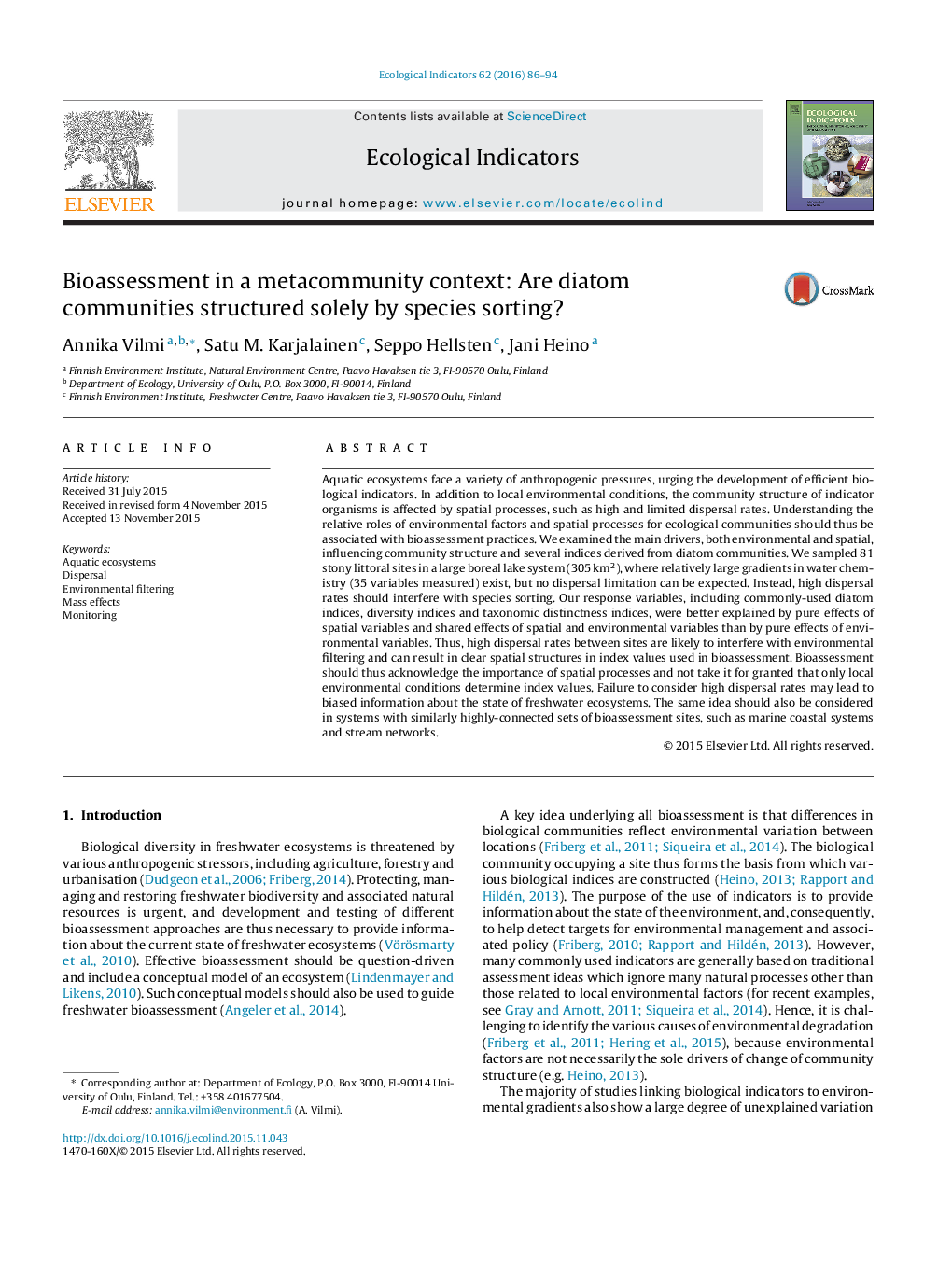| Article ID | Journal | Published Year | Pages | File Type |
|---|---|---|---|---|
| 6293921 | Ecological Indicators | 2016 | 9 Pages |
Abstract
Aquatic ecosystems face a variety of anthropogenic pressures, urging the development of efficient biological indicators. In addition to local environmental conditions, the community structure of indicator organisms is affected by spatial processes, such as high and limited dispersal rates. Understanding the relative roles of environmental factors and spatial processes for ecological communities should thus be associated with bioassessment practices. We examined the main drivers, both environmental and spatial, influencing community structure and several indices derived from diatom communities. We sampled 81 stony littoral sites in a large boreal lake system (305Â km2), where relatively large gradients in water chemistry (35 variables measured) exist, but no dispersal limitation can be expected. Instead, high dispersal rates should interfere with species sorting. Our response variables, including commonly-used diatom indices, diversity indices and taxonomic distinctness indices, were better explained by pure effects of spatial variables and shared effects of spatial and environmental variables than by pure effects of environmental variables. Thus, high dispersal rates between sites are likely to interfere with environmental filtering and can result in clear spatial structures in index values used in bioassessment. Bioassessment should thus acknowledge the importance of spatial processes and not take it for granted that only local environmental conditions determine index values. Failure to consider high dispersal rates may lead to biased information about the state of freshwater ecosystems. The same idea should also be considered in systems with similarly highly-connected sets of bioassessment sites, such as marine coastal systems and stream networks.
Related Topics
Life Sciences
Agricultural and Biological Sciences
Ecology, Evolution, Behavior and Systematics
Authors
Annika Vilmi, Satu M. Karjalainen, Seppo Hellsten, Jani Heino,
